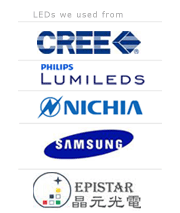News
Search
Popular search



Researchers at Carnegie Mellon University have published a paper evaluating the cost of energy for lighting systems and concluded that a DC grid is far less expensive powering LED lighting.
The debate over AC or DC power grids will apparently continue into a third century as researchers have documented significant energy savings potential in commercial buildings when LED lighting is powered by a DC grid. Carnegie Mellon University researchers say DC power could save $24,000 a year in a 48,000-ft2 building lit by solid-state lighting (SSL).
The university team published the research in the scientific journal Energy Policy. A DC grid was not identified as an advantage for fluorescent lighting, but the advantage for SSL is clear. Moreover in a building equipped with solar cells that generate DC power, the savings escalate another $5000 per year.
The savings documented by the researchers is over and above the baseline energy savings attributable to LED-based lighting. The documented savings are purely attributable to the efficiency of the power grid and the power conversions needed to drive the lighting.
In reality, the report is hardly a surprise. Fluorescent lighting was designed for AC-powered applications. LEDs require an AC-DC conversion, and generally a second, constant-current DC conversion to operate from the AC line. Every conversion wastes energy and a DC grid eliminates a conversion stage. And in the case of the additional savings in a solar installation, those DC solar cells also minimize conversions.
DC grid activity
Indeed, the allure of DC power is already apparent in the SSL industry. We’ve covered the activities of the EMerge Alliance since its founding in 2009. EMerge is focused on standardization of a DC-power grid for commercial buildings. The initial target was lighting but now the alliance is also targeting DC power to the desktop.
In addition, lighting network specialist Redwood Systems is supplying DC power to SSL luminaires in its proprietary system. The Redwood lighting engine uses Cat-5/6, computer-network cables to carry DC power and control information.
There are a number of lighting vendors that have announced products that are compatible with the EMerge and/or Redwood Systems. Lunera Lighting, for example, announced Redwood-compatible planar lighting last September and had previously announced an EMerge-compliant model.



